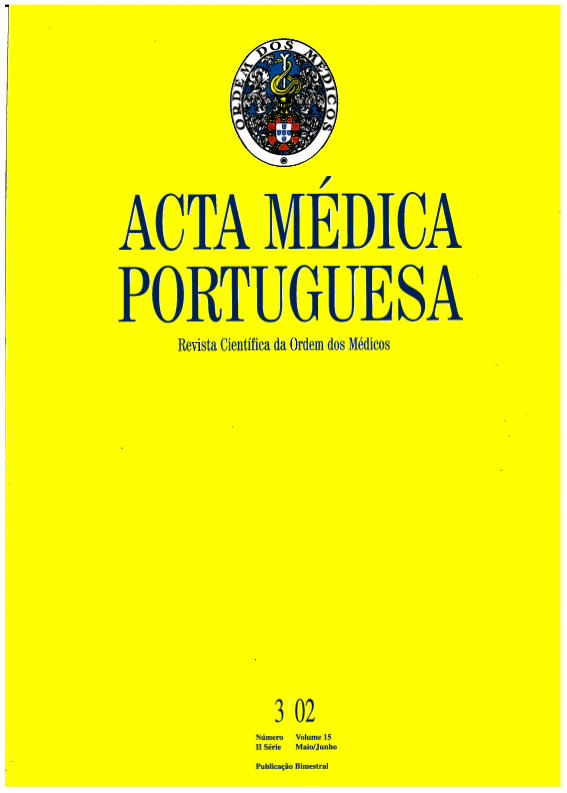Prevalência de anemia por deficiência de ferro de acordo com o tipo de alimentação do lactente.
DOI:
https://doi.org/10.20344/amp.1928Resumo
Iron deficiency is the world most prevalent nutritional disorder.To determine the prevalence of iron deficiency anemia in a population of infants with nine months of age, and the variation of this prevalence according to infants feeding regimes.One hundred eighty eight infants with nine months of age were studied for anthropometry, socio-economic factors and feeding regime. Blood samples were taken for blood cell counts, serum ferritin, iron and transferrin. Infants were labelled anaemic if haemoglobin level was less than 110 g/L and with iron deficiency anaemia if, in addition, they had a ferritin value of less than 12 g/L.The mean (standard deviation) values for haemoglobin were 111.8 g/L (9.1 g/L). Seventy-nine infants (42%) were anaemic. The prevalence of iron deficiency anaemia was 20%. Infants with iron deficiency anaemia were fed with iron fortified formula for 2.3 months in average in contrast with 3.8 months of those without iron deficiency anaemia (.005). Cereals fortified with iron were introduced in the nourishment of infants with iron deficiency anaemia at 4.3 months in average in contrast with 3.9 months among those without it (.009). The infants with iron deficiency anaemia were breast fed for 4.8 months in average in contrast with 3.7 months among those without it (.079). Age of the introduction of cow's milk, social class and Graffar, vitamin C supplementation and anthropometric parameters were not significantly associated with iron deficiency anaemia.This study points information about which groups are more at risk of developing iron deficiency anaemia in infants but when this evidence is only based in feeding practices one can not completely separate infants with and without iron deficiency anaemia; therefore a universal screening seems an indispensable tool for identification of iron deficiency anaemia.Downloads
Downloads
Como Citar
Edição
Secção
Licença
Todos os artigos publicados na AMP são de acesso aberto e cumprem os requisitos das agências de financiamento ou instituições académicas. Relativamente à utilização por terceiros a AMP rege-se pelos termos da licença Creative Commons ‘Atribuição – Uso Não-Comercial – (CC-BY-NC)’.
É da responsabilidade do autor obter permissão para reproduzir figuras, tabelas, etc., de outras publicações. Após a aceitação de um artigo, os autores serão convidados a preencher uma “Declaração de Responsabilidade Autoral e Partilha de Direitos de Autor “(http://www.actamedicaportuguesa.com/info/AMP-NormasPublicacao.pdf) e a “Declaração de Potenciais Conflitos de Interesse” (http://www.icmje.org/conflicts-of-interest) do ICMJE. Será enviado um e-mail ao autor correspondente, confirmando a receção do manuscrito.
Após a publicação, os autores ficam autorizados a disponibilizar os seus artigos em repositórios das suas instituições de origem, desde que mencionem sempre onde foram publicados e de acordo com a licença Creative Commons









